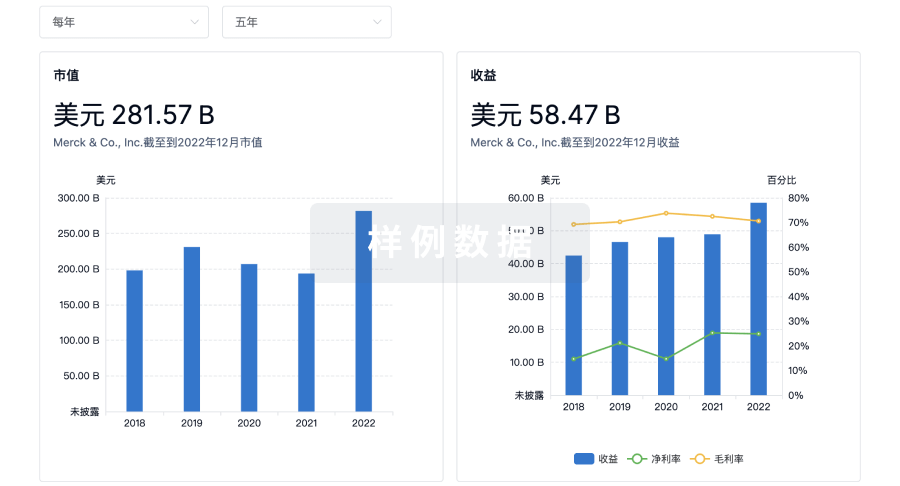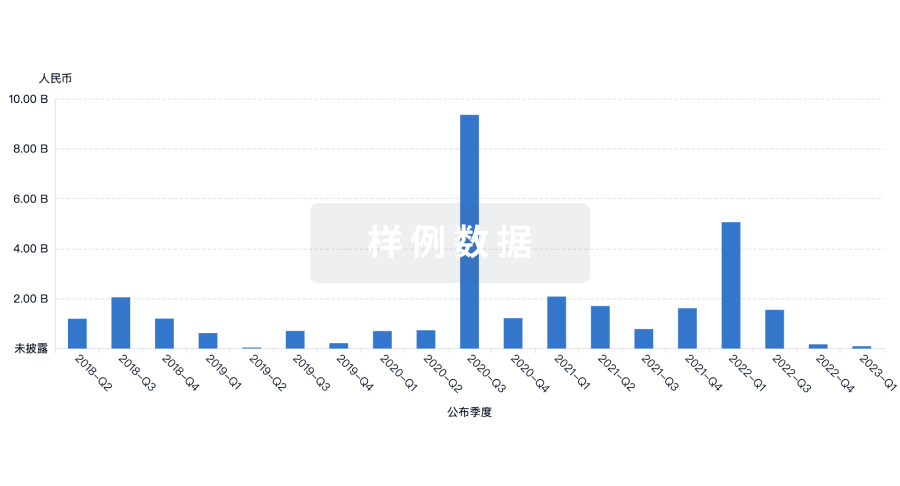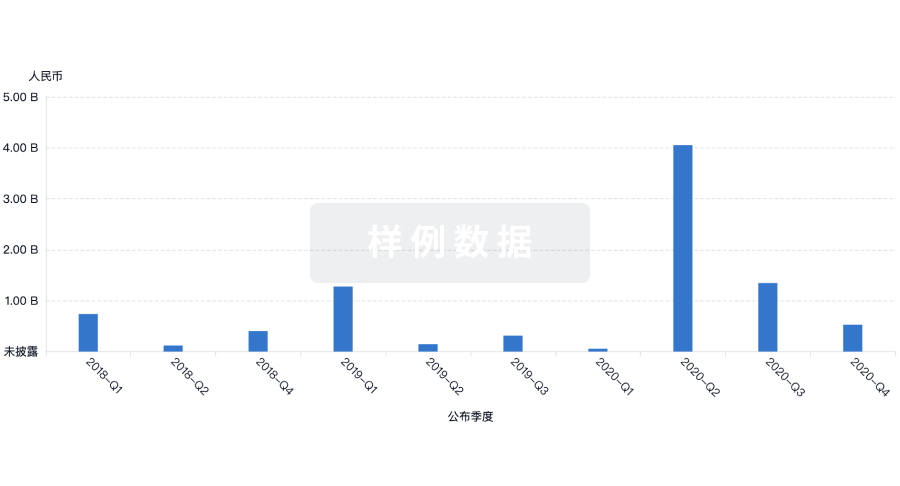预约演示
更新于:2025-11-12

Shanghai Fosun Pharmaceutical (Group) Co., Ltd.
更新于:2025-11-12
概览
标签
感染
肿瘤
呼吸系统疾病
小分子化药
预防性疫苗
多价疫苗
疾病领域得分
一眼洞穿机构专注的疾病领域
暂无数据
技术平台
公司药物应用最多的技术
暂无数据
靶点
公司最常开发的靶点
暂无数据
| 排名前五的药物类型 | 数量 |
|---|---|
| 小分子化药 | 73 |
| 单克隆抗体 | 33 |
| 预防性疫苗 | 20 |
| 双特异性抗体 | 19 |
| 生物类似药 | 19 |
关联
244
项与 上海复星医药(集团)股份有限公司 相关的药物靶点- |
作用机制 免疫刺激剂 |
在研适应症 |
非在研适应症- |
最高研发阶段批准上市 |
首次获批国家/地区 中国 |
首次获批日期2025-06-17 |
作用机制 MEK1抑制剂 [+1] |
在研机构 |
原研机构 |
最高研发阶段批准上市 |
首次获批国家/地区 中国 |
首次获批日期2025-05-27 |
作用机制 CDK4抑制剂 [+1] |
在研机构 |
原研机构 |
在研适应症 |
最高研发阶段批准上市 |
首次获批国家/地区 中国 |
首次获批日期2025-05-27 |
622
项与 上海复星医药(集团)股份有限公司 相关的临床试验CTR20253686
单中心、随机、开放、单剂量、两制剂、两周期、两序列交叉设计的空腹和餐后的人体生物等效性研究
本试验旨在研究单次空腹和餐后口服重庆药友制药有限责任公司研制、生产的磷酸芦可替尼片(5 mg)的药代动力学特征;以Novartis Pharma Schweiz AG, 瑞士持证、Novartis Pharma Stein AG, 瑞士生产的磷酸芦可替尼片(捷恪卫®,5 mg)为参比制剂,比较两制剂中药动学参数Cmax、AUC0-t、AUC0-∞,评价两制剂的人体生物等效性。
开始日期2025-10-14 |
申办/合作机构 |
CTR20253875
随机、开放设计评价冻干人用狂犬病疫苗(人二倍体细胞)以5剂免疫程序和4剂免疫程序(2-1-1)接种于10-60岁人群的安全性的I期临床试验。
评价在10~60岁人群中按照5剂免疫程序和4剂免疫程序(2-1-1)接种试验疫苗的安全性。
开始日期2025-10-12 |
申办/合作机构 |
ChiCTR2500112128
A clinical study on the treatment of hepatolenticular degeneration with ATP7B messenger ribonucleic acid/lipid nanoparticles (DSL101)
开始日期2025-10-01 |
申办/合作机构 安徽医科大学第一附属医院 [+2] |
100 项与 上海复星医药(集团)股份有限公司 相关的临床结果
登录后查看更多信息
0 项与 上海复星医药(集团)股份有限公司 相关的专利(医药)
登录后查看更多信息
193
项与 上海复星医药(集团)股份有限公司 相关的文献(医药)2025-12-01·CANCER CHEMOTHERAPY AND PHARMACOLOGY
Pharmacokinetics, mass balance, and metabolism of [14C]FCN-437c, a selective and potent CDK4/6 inhibitor in humans
Article
作者: Diao, Xingxing ; Yan, Shu ; Gao, Lei ; Li, Lize ; Zhang, Hua ; Miao, Liyan ; Ma, Sheng ; Yang, Xiaoran ; Diao, Lei ; Tian, Ling
This study investigated the pharmacokinetics, mass balance, and metabolism of [14C]FCN-437c, a selective and potent CDK4/6 inhibitor, in humans. Six healthy male Chinese subjects were administered a single oral dose of 200 mg [14C]FCN-437c (120 µCi), and plasma, urine, and feces samples were collected up to 456 h post-dose. The geometric mean Cmax of radioactivity in plasma and blood were 706 and 557 ng eq./mL, respectively, with a median Tmax of 5.0 h and a geometric mean t1/2 of 56.5 h in plasma. The primary route of elimination was fecal excretion, accounting for a mean of 77.16% of the dose, whereas urinary excretion constituted a mean of 19.19% of the administered radioactivity. UHPLC-HRMS analysis identified 12 metabolites in human plasma, urine, and feces, with 8 of them being phase I metabolites, and the major metabolic pathways were mono-oxidation and O-dealkylation. Additionally, 4 phase II metabolites were identified, including two glucuronides, one glutathione conjugate, and one cysteine conjugate. The study provides insights into the metabolic stability and clearance mechanisms of FCN-437c in human, which are essential for its further clinical development and dosing regimens.
2025-12-01·JOURNAL OF CONTROLLED RELEASE
Hepatocyte-targeted lipid nanoparticle for full-length ATP7B mRNA delivery in Wilson disease
Article
作者: Ding, Tianhao ; Ma, Yinyu ; Cui, Zhiping ; Wang, Songli ; Wang, Bin ; Wang, Weiping ; Tian, Kaisong ; Yang, Min ; Zhan, Changyou ; Guo, Zhiwei ; Jiang, Kuan
Wilson disease (WD), a copper metabolism disorder caused by ATP7B mutations, requires alternative gene therapies due to the limitations of current treatments such as drug resistance and side effects. Here, we developed a hepatocyte-targeted ATP7B mRNA therapeutic system using a low immunoreactivity lipid nanoparticle (LNP), in which hydroxy-terminated polyethylene glycol lipid (OH-PEG) was utilized to evade human pre-existing anti-PEG antibody recognition and reduce immunogenicity compared with methoxy-terminated polyethylene glycol lipid (MeO-PEG). By optimizing the OH-PEG molar ratio at 3 %, LNP-mediated mRNA expression in hepatocytes increased twofold, while non-target cell expression (Kupffer cells, B cells) decreased by 2 to 6 folds. In vitro studies confirmed ATP7B protein localization to the trans-Golgi network and copper transport functionality. In WD model mice, long-term intervention (6 months) induced reductions in hepatic copper accumulation (up to 72.1 %) in a dose-dependent manner, restored multi-organ copper homeostasis, and normalized ceruloplasmin activity. Safety assessments revealed improved serum biochemical parameters and histopathology, with 95 % of ionizable lipid metabolically cleared within one week after treatment, without allergic reactions or organ toxicity. This study establishes a translatable WD gene therapy platform using a hepatocyte-targeted, low immunoreactivity LNP for full-length ATP7B mRNA delivery, which also serves as an mRNA delivery system for other liver diseases.
2025-11-01·PARKINSONISM & RELATED DISORDERS
Efficacy and safety of DaxibotulinumtoxinA for injection in adults with cervical dystonia: Pooled global analysis of ASPEN-1 and ASPEN-1-CN randomized trials
Article
作者: Ellenbogen, Aaron ; Lingjing, Jin ; Patel, Atul T ; Wang, Hui ; Xingyue, Hu ; Banach, Marta ; Xinhua, Wan ; Hollander, David A ; Gallagher, Conor J ; Lei, Ge ; Kazerooni, Rashid ; Xiaojing, Fan ; Gross, Todd M
BACKGROUND:
DaxibotulinumtoxinA for injection (DAXI), the first long-acting botulinum toxin (BoNT) type A, is FDA approved for cervical dystonia (CD). DAXI's novel formulation, which includes a custom-engineered peptide, is designed to provide an extended duration of clinical benefit.
OBJECTIVE:
To evaluate the pooled efficacy and safety of DAXI for CD across two phase 3, multicenter, randomized, double-blind, placebo-controlled trials: ASPEN-1, conducted in North America and Europe, and ASPEN-1-CN, a similarly designed, smaller pivotal clinical trial, conducted in China.
METHODS:
Adults with moderate-to-severe CD were randomized (3:3:1) to receive DAXI 125U, DAXI 250U, or placebo. The primary endpoint was change from baseline in Toronto Western Spasmodic Torticollis Rating Scale (TWSTRS) total score averaged across weeks 4 and 6. A key secondary endpoint was duration, defined as time until loss of >80 % of peak effect.
RESULTS:
In all, 357 subjects were randomized and received DAXI 125U (n = 149), DAXI 250U (n = 154), or placebo (n = 54). DAXI 125U (-12.0) and DAXI 250U (-11.9) significantly improved the mean TWSTRS total score versus placebo (-4.6; P < 0.0001). Median (95 % CI) duration of effect was 24.1 (20.6-28.9) weeks for DAXI 125U and 22.0 (20.1-24.3) weeks for DAXI 250U. Rates of treatment-related dysphagia (125U: 4.7 %, 250U: 4.5 %) and muscle weakness (125U: 5.4 %, 250U: 4.5 %) were low for both active doses.
CONCLUSIONS:
This pooled analysis of two phase 3 trials demonstrates that DAXI is an effective, safe, and long-acting treatment for CD. Key adverse events occurred at rates lower than prior pivotal trials of BoNTs for CD.
9,608
项与 上海复星医药(集团)股份有限公司 相关的新闻(医药)2025-11-11
资本眼一周行情11月3日至11月7日,医药生物指数下跌2.62%,跑输上证指数2.37个百分点,连续七周跑输上证指数。创新药(BK1106)周内下跌3.51%;恒生医疗保健业指数(HSCICH)周下跌2.39%;港股创新药ETF(513120)周内下跌3.92%。一周点评经历一轮强劲上涨后,创新药行业已步入挤泡沫阶段。投资重回理性,对行业来说不是坏事,但在一定程度上,当前市场调整力度偏大,康方生物、再鼎医药、科伦博泰等部分头部公司近期跌幅超过30%,创新药的悲观情绪似乎卷土重来。近一个月跌幅较多的再鼎医药,有两个公开消息。一是胃癌新药贝玛妥珠单抗临床数据不及预期;二是公司近期披露的三季报显示,报告期内,公司实现总收入1.16亿美元,同比增长14%;亏损净额为3596.3万美元,同比有所收窄。公司收入增长主要是由“纽再乐”和“鼎优乐”销售额增长所驱动,部分被“则乐”销量放缓所抵销。贝玛妥珠单抗是再鼎医药从安进公司收购的Five Prime公司方面引进的药物。安进公司表示,关于贝玛妥珠单抗联合化疗及纳武利尤单抗用于一线胃癌的1b/3期临床研究FORTITUDE-102,由于临时分析显示疗效不足,该研究已被停止。此决定是基于资料监查委员会的要求。短期来看,创新药行业仍处于情绪修复与估值重构阶段,个股波动受临床数据、业绩指引等事件性因素影响较大,再鼎医药因重磅品种临床终止与业绩下修,短期仍面临情绪压力。但从中长期视角,行业创新逻辑未变,具备全球竞争力的管线资产仍是企业估值的核心支撑。一周IPO动向没能如愿“嫁入”A股上市公司,海纳医药递表港交所港交所官网披露,南京海纳医药科技股份有限公司(以下简称“海纳医药”)于近日向港交所首次呈交了IPO(首次公开募股)申请文件,中金公司为独家保荐人,这距离今年6月底成都先导因核心条款未能达成一致而宣布终止筹划收购南京海纳约65%股权的重大资产重组事项,才过去了4个多月。海纳医药成立于2001年,是一家医药研发与制造一体化公司,提供CXO(制药外包)服务。同时,公司拥有专有产品管线,主要通过医药技术转让对该等管线进行商业化。招股书显示,海纳医药的业务由CXO服务与专有管线构成。在CXO领域,公司提供端到端或模块化的CRO及CMO解决方案(涵盖医药开发),以及CMC、临床及生物等效性试验服务、注册申请递交及合同生产。针对专有管线的每项资产,公司将基于其特性及市场综合考量,选择通过药物技术转让或自主商业化变现。招股书显示,海纳医药的主要收入来自CXO服务,截至2025年上半年末,海纳医药仍有398个正在进行的CXO项目。2024年,公司营收4.25亿元,同比增长3.65%,净利润为5329.5万元,同比下滑了27%,出现“增收不增利”的情况。今年上半年,公司营收和净利润还出现“双降”,分别同比下滑16.97%和25.82%。对于今年上半年营收下滑,海纳医药在招股书中称,主要由于上半年公司CRO服务所得收入减少4750万元,以及销售自有药品收入同比下滑45.8%等因素影响。《每日经济新闻》注意到,海纳医药也曾闯关A股创业板IPO。深交所官网显示,海纳医药创业板IPO于2023年6月30日获受理,原计划募资8.5亿元,用于海纳医药CXO研发总部项目、补充流动资金;同年7月25日收到首轮问询函,2024年6月24日,因保荐人主动“撤单”,公司IPO就此终止。创新眼一周临床试验动向根据医药魔方提供的数据,11月3日至11月7日,国家药品监督管理局药品审评中心共披露110条临床试验登记信息,其中33条为处于临床试验II期及以上的创新药新登记临床试验信息,主要覆盖肿瘤领域、免疫、心血管、精神领域。上周,有4款创新药获批。数据来源:医药魔方提供前沿洞察国内首款!CAR-T获批上市,治疗儿童白血病11月7日消息,国家药品监督管理局宣布已于近日批准重庆精准生物申报的1类生物新药普基仑赛注射液(pCAR-19B细胞自体回输制剂)上市,用于治疗3岁~21岁CD19阳性的难治或复发(首次缓解12个月后复发需经挽救化疗)的急性B淋巴细胞白血病患者。此前,该药曾被CDE(国家药品监督管理局药品审评中心)纳入突破性治疗和优先审评。医药魔方数据显示,精准生物的普基仑赛是国内首款获批上市用于治疗儿童白血病的CAR-T产品。该药最早在2018年2月首次申请临床,一年后首次获批临床,2024年该药在国内提交上市申请。白血病是全球最为常见的恶性肿瘤之一,其发病总人数和每年新增人数均呈现上升趋势。其中,ALL(急性成淋巴细胞性白血病)是儿童最常见的恶性肿瘤,其发病率约3/10万~5/10万,也是导致儿童和青少年死亡的主要疾病之一,其中B-ALL约占ALL的80%左右。此前,国内已有4款靶向CD19的CAR-T产品获批上市,分别为复星凯特引进的阿基仑赛、药明巨诺的瑞基奥仑赛、合源生物的纳基奥仑赛以及恒润达生的雷尼基奥仑赛。重庆精准生物的普基仑赛是国内获批的第5款CD19 CAR-T产品。医药调查北大医药董事长徐晰人被抓前,警方去集团厂区调查过!内部人士:集团资产被其处置,巨额资金去向不明随着董事长、总裁徐晰人被刑事拘留,北大医药(000788.SZ)及其控股方西南合成医药集团有限公司(简称合成集团或西南合成),深陷舆论漩涡。11月4日,重庆渝北区,合成集团最早的洛碛厂区,一场夜雨过后,50多岁的老张,正清扫着厂区道路上的落叶,一只嗜血的蚊子在他脸上停留直到肚皮已发红……深秋的晨光透过云层,给锈迹斑斑的铁门、略显破败的厂房带来一丝暖意。不远处,长江水静静流淌,见证着这家老牌药厂数十年的沉浮。合成集团最早的洛碛厂区 每经记者 鄢银婵 摄对于老张和合成集团老厂区的大多数职工而言,去年底才入主的新老板徐晰人,在短短十个月内,从神秘登场到突然被刑拘调查,留下的是一连串待解的谜团。
2025-11-11
11月8日,第三届浦江生物医药源头创新大会在闵行区顺利举办。会议以“源头创新 智药未来”为主题,聚焦我国医药工业前沿技术创新与全球医药合作,围绕生物医药源头创新、全球合作路径、AI赋能、跨界融合等热点议题展开深度对话。
全国工商联副主席、上海市政协副主席、市工商联主席、市总商会会长寿子琪,上海市科学技术委员会主任骆大进,闵行区委书记陆方舟,闵行区委副书记、区长吴强,市工商联副主席封丹华,市药品监督管理局副局长郭术廷,闵行区副区长谭瑞琮,复星国际董事长郭广昌等出席。
本次大会由中国医药创新促进会、上海市工商联生物医药商会主办,上海复星医药(集团)股份有限公司承办。
寿子琪在致辞中指出,党的二十届四中全会将“加快建设健康中国”作为民生领域核心部署,把健康优先发展战略纳入中国式现代化全局。
他表示,在这一宏伟蓝图下,生物医药产业的发展水平将直接关系到规划目标的实现,源头创新更是其发展的核心引擎与生命线。
他强调,要立足时代方位,深刻把握源头创新战略价值,推动产业向价值链高端跃升,重塑产业发展格局,在竞争中赢得战略主动。要坚持问题导向,靶向破解创新发展关键堵点,搭建投融资对接平台,推动“产学研医”协同,完善人才培养体系。要汇聚各方合力,共同构建一个充满活力、协同高效、保障有力的产业创新生态,市工商联生物医药商会要以经略全球的眼光系统性地帮助上海生物医药企业嵌入全球价值链高端环节,引领行业高质量发展,与政府、高校等共同推动上海生物医药产业从“跟跑创新”迈向“源头引领”,为中国式现代化建设贡献上海力量。
骆大进强调,上海将进一步强化前瞻布局,面向产业创新发展需求,构建完备的平台支撑体系,以新靶点、新机制为目标,加速底层共性技术、关键核心技术和前沿颠覆性技术突破,推进AI技术赋能生物医药创新研发与生产制造。
进一步优化生物医药产业发展生态,聚焦国际人才、金融资本、医疗资源、临床数据等要素,构建跨国企业集聚、头部企业引领、初创企业扎根、服务平台支撑的产业协同创新生态,支持更多创新药企深度融入全球创新链和产业链,让更多创新成果惠及全球患者,支持“上海方案”走向世界。
进一步打造国际一流营商环境,推进政策可读化、服务智能化、监管精准化,聚焦提升经营主体感受度与获得感,持续加强知识产权保护和惠企服务,着力降低各类要素综合成本,更好稳预期、强信心、促发展,全力把上海打造成为全球投资首选地和创新药械最友好城市。
吴强指出,生物医药是关系国计民生和国家安全的战略性新兴产业,是上海培育发展新质生产力的重要领域之一,也是闵行着力打造的千亿级产业集群之一。
他表示,闵行作为上海市生物医药产业的两大承载区之一,推动生物医药产业高质量发展,不仅是闵行肩负的重大战略使命,也是驱动产业转型升级的重要抓手。
他希望能够进一步建立与高校院所、科研机构、龙头企业的深度对接,聚焦创新体系建设、科技成果转化、产业升级等重点领域,开展更多务实合作,为推动生物医药源头创新、企业发展壮大保驾护航,携手打造生物医药产业创新发展的新高地。
郭广昌分享了复星在生物医药源头创新领域的战略布局与实践思考。
他表示,源头创新必须始终围绕未被满足的临床需求展开,坚持以患者受益为第一原则,推动中国医药创新实现从“跟跑”到“并跑”乃至“领跑”的历史性跨越;同时要以拥抱AI技术、整合系统性能力为支撑,通过构建开放合作的创新生态、夯实全球运营能力,保持企业在全球范围内的可持续竞争力。
他表示,源头创新是通向未来产业的必由之路,开放合作是加速创新的最佳路径。复星将与各位行业伙伴携手,共同助力上海打造世界级生物医药创新高地,让更多中国创新成果惠及全球患者,努力实现让更多人健康快乐活到121岁的愿景。
大会邀请了中国工程院院士、中国科学院大学药学院院长、中国科学院上海药物所肿瘤研究中心主任丁健,中国医药创新促进会资深会长、首席专家宋瑞霖,中国工程院院士、南京工业大学国家生化工程技术研究中心主任应汉杰,上海市工商联生物医药商会会长、复星国际联席首席执行官陈启宇作主题报告。
谭瑞琮介绍了闵行区生物医药产业的发展优势与布局规划。
<左右滑动查看照片>
会上,围绕“源头创新生态构建的‘破’与‘立’”、“AI重塑生物医药产业的创新范式”两个主题,邀请有关嘉宾开展圆桌交流与前沿对话。
会议汇聚顶尖院士专家、政策制定者、生物医药领域顶尖科学家及企业家等,旨在精准把握行业脉搏,搭建高效对接平台,推动领军企业、国家级重点实验室、科研机构与高水平大学深度联动,充分激活产学研医创新潜能,畅通成果转化渠道,为生物医药源头创新与全球合作注入新动能。
供稿:市工商联商会和法律服务部
高管变更
2025-11-11
·氨基观察
©氨基观察-创新药组原创出品
作者 | 黄凯
国产ADC持续获得FDA认可。
11月11日,映恩生物合作伙伴Avenzo宣布,FDA已授予其潜在同类最佳EGFR/HER3双抗ADC药物AVZO-1418/DB-1418快速通道资格,用于EGFR-TKI经治后的EGFR突变非小细胞肺癌患者。
创新药企拥抱互联网平台。
11月11日,迈威生物宣布,与平安好医生达成深度业务合作。双方将共同打造多领域产品线上线下一体化解决方案,探索医疗健康服务创新模式,共筑骨健康/自免领域全病程管理新生态,推动优质医疗资源加速惠及患者。
在过去的一天里,国内外医药市场还有哪些热点值得关注?让氨基君带你一探究竟。
/ 01 /
市场速递
1)迈威生物与平安好医生达成深度合作
11月11日,迈威生物宣布,与平安好医生达成深度业务合作。双方将共同打造多领域产品线上线下一体化解决方案,探索医疗健康服务创新模式,共筑骨健康/自免领域全病程管理新生态,推动优质医疗资源加速惠及患者。
/ 02 /
医药动态
1)礼来LY4064809片获临床许可
11月11日,据CDE官网,礼来LY4064809片获临床许可,拟联合内分泌治疗(ET)和CDK4/6抑制剂治疗PIK3CA突变的晚期乳腺癌。
2)映恩生物双抗ADC DB-1418获美国FDA授予快速通道资格
11月11日,映恩生物合作伙伴Avenzo宣布,FDA已授予其潜在同类最佳EGFR/HER3双抗ADC药物AVZO-1418/DB-1418快速通道资格,用于EGFR-TKI经治后的EGFR突变非小细胞肺癌患者。
3)乐普生物创新型ADC MRG007获美国IND临床批件
11月11日,乐普生物宣布,自主研发的创新型抗体偶联药物(ADC)MRG007获得FDA)的新药临床试验批件,即将在美国启动临床研究。
4)复宏汉霖宣布地舒单抗BILDYOS®和BILPREVDA®获英国批准上市
11月11日,复宏汉霖宣布,英国药品和健康产品管理局已批准地舒单抗BILDYOS®和BILPREVDA®的上市许可,两款产品分别为PROLIA®(地舒单抗)和XGEVA®(地舒单抗)的生物类似药,覆盖原研药在英国已获批的所有适应症。
PS:欢迎扫描下方二维码,添加氨基君微信号交流。
快速通道抗体药物偶联物
100 项与 上海复星医药(集团)股份有限公司 相关的药物交易
登录后查看更多信息
100 项与 上海复星医药(集团)股份有限公司 相关的转化医学
登录后查看更多信息
组织架构
使用我们的机构树数据加速您的研究。
登录
或

管线布局
2025年11月17日管线快照
管线布局中药物为当前组织机构及其子机构作为药物机构进行统计,早期临床1期并入临床1期,临床1/2期并入临床2期,临床2/3期并入临床3期
药物发现
34
90
临床前
临床申请
6
10
临床申请批准
临床1期
17
26
临床2期
临床3期
16
6
申请上市
批准上市
45
57
其他
登录后查看更多信息
当前项目
| 药物(靶点) | 适应症 | 全球最高研发状态 |
|---|---|---|
斯鲁利单抗 ( PD-1 ) | 广泛期小细胞肺癌 更多 | 批准上市 |
地舒单抗生物类似药(上海复宏汉霖生物) ( RANKL ) | 绝经期后骨质疏松 更多 | 批准上市 |
曲妥珠单抗生物类似药 (上海复宏汉霖生物) ( HER2 ) | HER2阳性胃癌 更多 | 批准上市 |
阿基仑赛 ( CD19 ) | 大B细胞淋巴瘤 更多 | 批准上市 |
阿达木单抗生物类似药 (复宏汉霖) ( TNF-α ) | 克罗恩病 更多 | 批准上市 |
登录后查看更多信息
药物交易
使用我们的药物交易数据加速您的研究。
登录
或

转化医学
使用我们的转化医学数据加速您的研究。
登录
或

营收
使用 Synapse 探索超过 36 万个组织的财务状况。
登录
或

科研基金(NIH)
访问超过 200 万项资助和基金信息,以提升您的研究之旅。
登录
或

投资
深入了解从初创企业到成熟企业的最新公司投资动态。
登录
或

融资
发掘融资趋势以验证和推进您的投资机会。
登录
或

生物医药百科问答
全新生物医药AI Agent 覆盖科研全链路,让突破性发现快人一步
立即开始免费试用!
智慧芽新药情报库是智慧芽专为生命科学人士构建的基于AI的创新药情报平台,助您全方位提升您的研发与决策效率。
立即开始数据试用!
智慧芽新药库数据也通过智慧芽数据服务平台,以API或者数据包形式对外开放,助您更加充分利用智慧芽新药情报信息。
生物序列数据库
生物药研发创新
免费使用
化学结构数据库
小分子化药研发创新
免费使用




